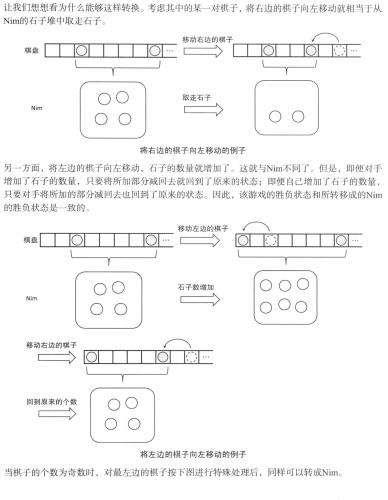Description
Georgia and Bob decide to play a self-invented game. They draw a row of grids on paper, number the grids from left to right by 1, 2, 3, ..., and place N chessmen on different grids, as shown in the following figure for example:

Georgia and Bob move the chessmen in turn. Every time a player will choose a chessman, and move it to the left without going over any other chessmen or across the left edge. The player can freely choose number of steps the chessman moves, with the constraint that the chessman must be moved at least ONE step and one grid can at most contains ONE single chessman. The player who cannot make a move loses the game.
Georgia always plays first since "Lady first". Suppose that Georgia and Bob both do their best in the game, i.e., if one of them knows a way to win the game, he or she will be able to carry it out.
Given the initial positions of the n chessmen, can you predict who will finally win the game?

Georgia and Bob move the chessmen in turn. Every time a player will choose a chessman, and move it to the left without going over any other chessmen or across the left edge. The player can freely choose number of steps the chessman moves, with the constraint that the chessman must be moved at least ONE step and one grid can at most contains ONE single chessman. The player who cannot make a move loses the game.
Georgia always plays first since "Lady first". Suppose that Georgia and Bob both do their best in the game, i.e., if one of them knows a way to win the game, he or she will be able to carry it out.
Given the initial positions of the n chessmen, can you predict who will finally win the game?
Input
The first line of the input contains a single integer T (1 <= T <= 20), the number of test cases. Then T cases follow. Each test case contains two lines. The first line consists of one integer N (1 <= N <= 1000), indicating the number of chessmen. The second line contains N different integers P1, P2 ... Pn (1 <= Pi <= 10000), which are the initial positions of the n chessmen.
Output
For each test case, prints a single line, "Georgia will win", if Georgia will win the game; "Bob will win", if Bob will win the game; otherwise 'Not sure'.
Sample Input
2
3
1 2 3
8
1 5 6 7 9 12 14 17
Sample Output
Bob will win
Georgia will win
Source
POJ Monthly--2004.07.18
这题我看书上题解的,确实巧妙。



1 program rrr(input,output); 2 var 3 t,n,i,j,s:longint; 4 a:array[0..1010]of longint; 5 procedure sort(q,h:longint); 6 var 7 i,j,x,t:longint; 8 begin 9 i:=q;j:=h;x:=a[(i+j)>>1]; 10 repeat 11 while a[i]<x do inc(i); 12 while x<a[j] do dec(j); 13 if i<=j then 14 begin 15 t:=a[i];a[i]:=a[j];a[j]:=t; 16 inc(i);dec(j); 17 end; 18 until i>j; 19 if j>q then sort(q,j); 20 if i<h then sort(i,h); 21 end; 22 begin 23 assign(input,'r.in');assign(output,'r.out');reset(input);rewrite(output); 24 readln(t); 25 for j:=1 to t do 26 begin 27 readln(n); 28 for i:=1 to n do read(a[i]); 29 if n mod 2=1 then begin inc(n);a[n]:=0; end; 30 sort(1,n); 31 s:=0; 32 for i:=1 to n-1 do 33 if i mod 2=1 then s:=s xor (a[i+1]-a[i]-1); 34 if s=0 then writeln('Bob will win') else writeln('Georgia will win'); 35 end; 36 close(input);close(output); 37 end.